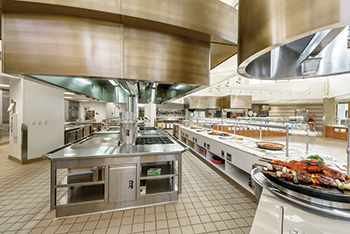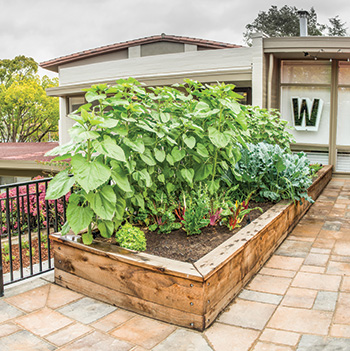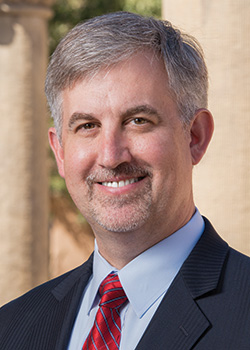Sometimes it seems there’s a plan for everything. A plan for the day. A plan for the weekend, when you might meet up with friends or go on a family outing. A plan for the kitchen, so you know what needs to go where. A plan for the project, with goals, actions and assessments.
Embarking on more sustainable endeavors? That, naturally, needs a solid plan too. It’s one thing to say you or your company remains dedicated to sustainable missions. It’s another to devise a strategy and the necessary actions and follow-ups to meet your goals.
 These days, we’re moving into a world where sustainable initiatives have become more than esoteric concepts or dreams; they’re being worked into the very fabric of day-to-day, month-to-month and year-over-year business.
These days, we’re moving into a world where sustainable initiatives have become more than esoteric concepts or dreams; they’re being worked into the very fabric of day-to-day, month-to-month and year-over-year business.
“Most of my clients, especially the colleges and universities, realize that it’s important to reduce energy and at least consider some of the sophisticated equipment out there that will help achieve those goals and help them save over the long term,” says Ray Soucie, principal of RSA Inc., and a long-time consultant focused on sustainability and designs following the LEED principles established by the U.S. Green Building Council. Many foodservice operators continue to be just as concerned about the food system in this country and want to support sustainable food production.
The question is, when looking to develop a concrete plan for sustainability, where do you start?
That’s where people like Soucie and John Turenne come in.
Step 1: Conduct Assessments
“Developing a plan for sustainability is the first level of
service I provide my clients,” says Turenne, the veteran consultant and president of Sustainable Food Systems LLC.
Turenne starts by organizing the plan into five different categories that he has identified as important steps toward becoming greener: food and products, facility, community, communication, and fiscal and nutritional well-being. “Then it’s important to assess where you are in each category and come up with specific, measurable actions and resources that can be achieved in a reasonable time frame.”
Both Turenne and Soucie will conduct site visits to assess the existing culture around sustainability and see what’s possible and what might not be.
“You want to know how much buy-in there is from management, number one,” Soucie says. “Otherwise I can specify and design this great facility that cuts back on waste and energy consumption, but if they don’t use the equipment properly or there is little oversight, they won’t get the return on investment financially. Sometimes I try to get clients to walk before they run when it comes to sustainability. Any time I can bring a client beyond where they think they want to be and help enlighten, that’s a win-win.”
Step 2: Determine Actions and Resources
While Turenne develops a spreadsheet or checklist of sorts to help clients see the plan in its entirety, Soucie works with his institutional operators to plug in sustainability actions within existing designs, operations plans and budgets. Either way, the plans are set in motion.
 Stanford works with the Food Service Technology Center to ensure it continues to purchase energy- and water-efficient equipment.“Not every client will budget for $100,000 worth of energy-saving equipment, but we can still put together a sustainable design package that could be as simple as getting a recycling system setup and adding some waste disposal units and making sure the menu is being managed properly to reduce food waste,” Soucie says.
Stanford works with the Food Service Technology Center to ensure it continues to purchase energy- and water-efficient equipment.“Not every client will budget for $100,000 worth of energy-saving equipment, but we can still put together a sustainable design package that could be as simple as getting a recycling system setup and adding some waste disposal units and making sure the menu is being managed properly to reduce food waste,” Soucie says.
For example, a rural school district might not have the means to compost disposable trays if there is no
composting in the community, but it could switch to reusable trays and silverware.
Like Soucie, Turenne also takes an incremental approach. “You don’t want to overwhelm the client with immeasurable or unrealistic goals,” he says.
Turenne, using his spreadsheet, fills in action steps next to the initial assessments and goals. An action step might be “train staff to cook from scratch.” Next to that he’ll write in resources needed to achieve that. In that case, he himself might be the resource as the chef who can train the staff. Or he’ll locate other people and processes that can help. He also includes a reasonable time frame by which to meet those goals.
These goals could include reducing electricity by 25 percent or sourcing all protein from sustainable farms (see Stanford University’s sustainability plan, page 88).
Step 3: Conduct Follow-Ups
The next step is to conduct regular follow-ups, stay involved and verify that the client follows the plan. “In LEED projects, there is a commissioning component that happens a year after the project is completed to ensure the design is functioning properly and maintaining energy and other
savings,” says Soucie.
But operators do not need to be following LEED to set up their own “commissioning” plan, he points out. “We might have installed demand-controlled exhaust fans but find the operator has continued to run those fans at full steam, racking up extra thousands of dollars,” Soucie says.
In some cases, the operator has a system to monitor energy use and other sustainability plan actions through metering and utility bill management, but this is where consultants can also step in to help.
Certain equipment can also track savings digitally; waste pulpers can track how much waste goes into the machine, and energy management systems, the most sophisticated of trackers, monitors kitchen equipment on a minute-by-minute basis.
Step 4: Communicate Successes and Reassess Goals
Say the operator has successfully saved a chunk of energy or switched to sourcing from local, sustainable farmers. That’s not enough. It’s important to communicate the success of the sustainability initiatives to get buy-in from customers and to illustrate to managers the investment was worth it.
 An herb garden here and at each dining hall provides culinary staff with a variety of fresh and organic herbs and vegetables. These gardens use as little as 10 percent of the required nutrients and water as traditional, soil-grown crops. “I try to work toward at least a two-year payback for certain types of equipment,” says Soucie. “Once it gets beyond four or five years, the capital investment is hard to justify.”
An herb garden here and at each dining hall provides culinary staff with a variety of fresh and organic herbs and vegetables. These gardens use as little as 10 percent of the required nutrients and water as traditional, soil-grown crops. “I try to work toward at least a two-year payback for certain types of equipment,” says Soucie. “Once it gets beyond four or five years, the capital investment is hard to justify.”
While equipment purchases might have clearer ROIs, sustainable food sourcing might not. That’s where Turenne’s communication section comes into play. “It’s so important to tell the customer what we’re doing and help them understand why they should support this mission,” he says. A lot of that communication comes down to marketing and regular conversations with customers.
Staff should also have the buy-in, understanding why the sustainability plan is important and how to help in the process of maintaining it.
And that only happens when they — and everyone — feel involved in the ultimate “greening” process that is the sustainability plan.
Stanford works with the Food Service Technology Center to ensure it continues to purchase energy- and water-efficient equipment.
An herb garden here and at each dining hall provides culinary staff with a variety of fresh and organic herbs and vegetables. These gardens use as little as 10 percent of the required nutrients and water as traditional, soil-grown crops.
Stanford University’s Sustainability Plan
 Stanford University’s Residential Dining & Enterprises division has long been known for its sustainability efforts. For example, Florence Moore Dining Hall is a 4-Star Certified Green Restaurant by the Green Restaurant Association. (See FE&S’ April 2015 Facility Design Project of the Month.) And earlier this year Stanford Dining added to its accolades through a sustainability grant from Hobart. Here Eric Montell, executive director of Residential & Dining Enterprises (R&DE) Stanford Dining, discusses the specifics of how the team developed and followed through on its sustainability plan.
Stanford University’s Residential Dining & Enterprises division has long been known for its sustainability efforts. For example, Florence Moore Dining Hall is a 4-Star Certified Green Restaurant by the Green Restaurant Association. (See FE&S’ April 2015 Facility Design Project of the Month.) And earlier this year Stanford Dining added to its accolades through a sustainability grant from Hobart. Here Eric Montell, executive director of Residential & Dining Enterprises (R&DE) Stanford Dining, discusses the specifics of how the team developed and followed through on its sustainability plan.
FE&S: What is Stanford Dining’s approach to sustainability?
EM: Sustainability is our mission, our vision, and also part of our core values. It’s in everything we do. We are honored to be recognized for these prestigious awards as it validates our commitment and dedication to sustainable best practices.
Through our Sustainable Food Program, we educate the world’s future leaders by sharing knowledge and creating awareness of food culture, systems and production. We favor sourcing products that are local, organic, humanely raised, fairly traded, and from family-owned farms and sustainable fisheries — 48 percent of our food purchases are sustainable.
In collaboration with students, staff and faculty, the Sustainable Food Program raises awareness through lectures, special events, academic partnerships, and hands-on learning in our organic gardens and in cooking classes at our Teaching Kitchen @ Stanford. We have a full-time Sustainable Food Program Manager and 10 to 20 student interns every year who help run the program. More than 100 student, staff and faculty gardeners participate in the campus’ BeWell Community Gardens, which R&DE Stanford Dining oversees.
FE&S: How has the university developed and set up a sustainability plan?
EM: Sustainable Stanford is a university-wide effort to reduce our environmental impact, preserve resources and show sustainability in action. Our vision is: “Create a healthier environment now and richer possibilities for generations to come.”
The strategic plan includes specific objectives such as support a sustainable future through sustainable purchasing practices, educate and empower the Stanford community to make sustainable food choices, provide hands-on learning experiences growing and cooking food from our organic gardens and reduce our impact on the earth’s resources through efficient and sustainable operations.
FE&S: Describe some of this year’s goals.
EM: This past year, R&DE Stanford Dining developed a plant-forward and plant-based protein menu for all of our dining halls, which reduced the amount of animal proteins purchased by 14 percent and increased plant-based protein purchases by 29 percent. Additionally, we have made the following new sustainability commitments: all our beef is grass-fed with no antibiotics and is purchased and container shipped to the U.S. from Australia, which is one of the most sustainable and efficient methods of transporting food; all chicken (except chicken breasts) are antibiotic and hormone free, local and humanely raised; and many of our produce items, including kale and beets, come from a local, organic, educational farm. In recognition of our efforts thus far, Stanford was voted peta2’s Favorite Vegan-Friendly Large College for 2015.
FE&S: How does Stanford’s sustainability plan tackle energy and water saving initiatives?
EM: Regarding energy, R&DE Stanford Dining has sustainability guidelines for all equipment. We work with the Food Service Technology Center to audit our kitchens and ensure we purchase energy- and water-efficient equipment. R&DE Stanford Dining replaced 1,475 light bulbs in the dining halls with LED bulbs, which will save over 125,000 kilowatt-hours and $17,000 in electricity costs every year. The lighting retrofit project was paid for by Stanford’s Energy Retrofit Program rebates.
In terms of water, R&DE Stanford Dining created a drought response plan and reduced water use by 9 percent in 2014, as compared to the year before, through staff training, student education and the purchase of new, efficient equipment, including dishwashers. Additionally, by switching to non-California beef, we realized a corresponding reduction in California water usage. The changes in our beef program have resulted in 50 million gallons of California water not used per year, which is critical during the severe California drought.
FE&S: How do you oversee and maintain the plan to make sure you’re on track with your goals?
EM: The university’s sustainability plan is led by the Provost’s Committee on Sustainability, a group of senior campus leaders, including Shirley Everett, the senior associate vice provost for residential and dining enterprises. The committee facilitates collaboration among faculty, staff and students as well as among schools, institutes, the Office of Sustainability and auxiliaries such as R&DE. The Provost’s Committee exerts leadership across campus; brings campus-wide sustainability issues to the attention of the provost and the president; and implements leadership recommendations. Formation of the Provost‘s Committee is the outcome of one of the many recommendations derived from the university’s year-long strategic exercise, Sustainability 3.0.
There is also a Sustainability Working Group that prepares policy and program recommendations to advance and implement sustainability practices on campus. Dara Silverstein, the R&DE Sustainable Food Program Manager, is a member of this group. The university’s Sustainability Working Group meets monthly to work on advancing the implementation of the Sustainability 3.0 goals. The Provost’s Committee reviews the goals and recommends changes.



